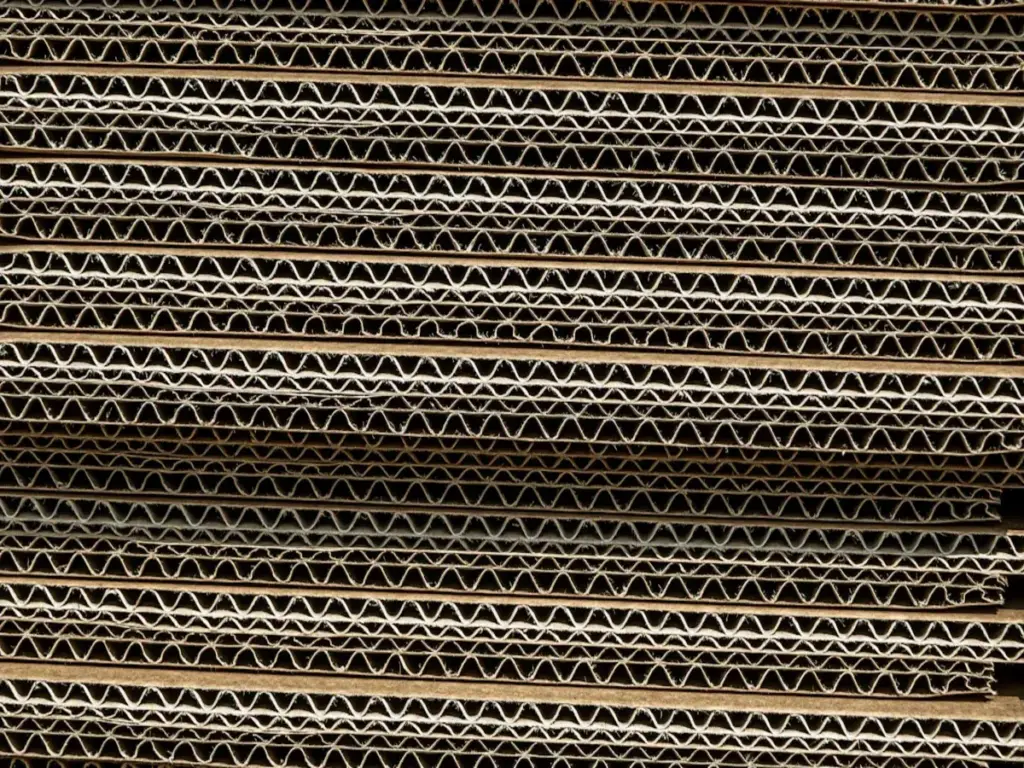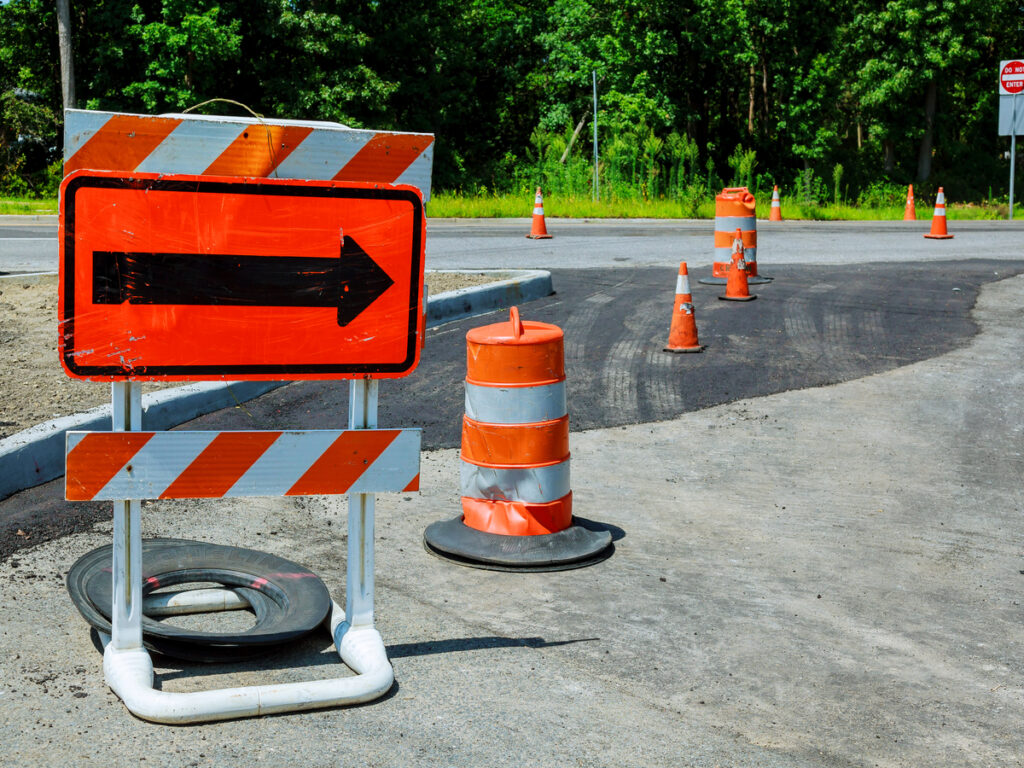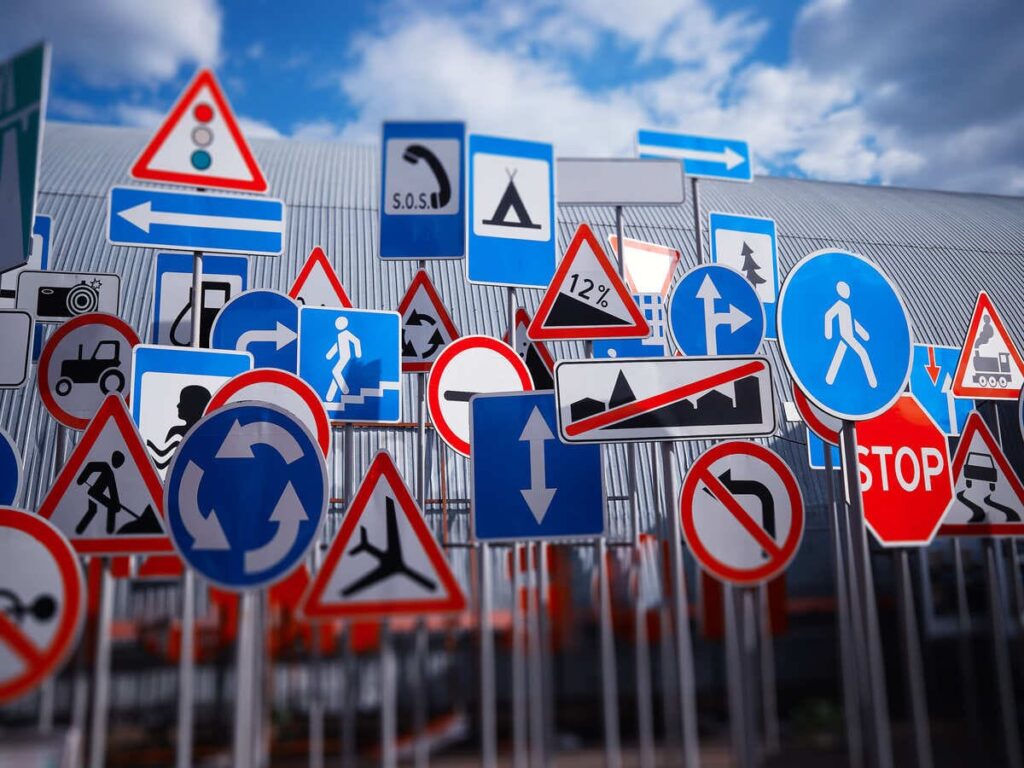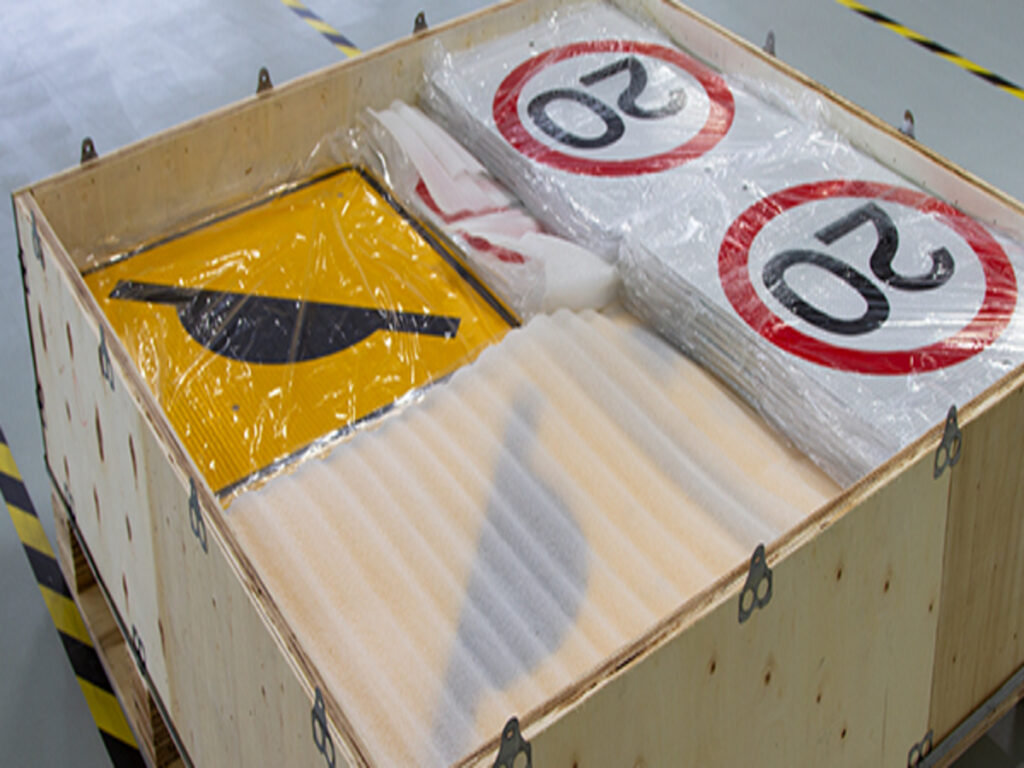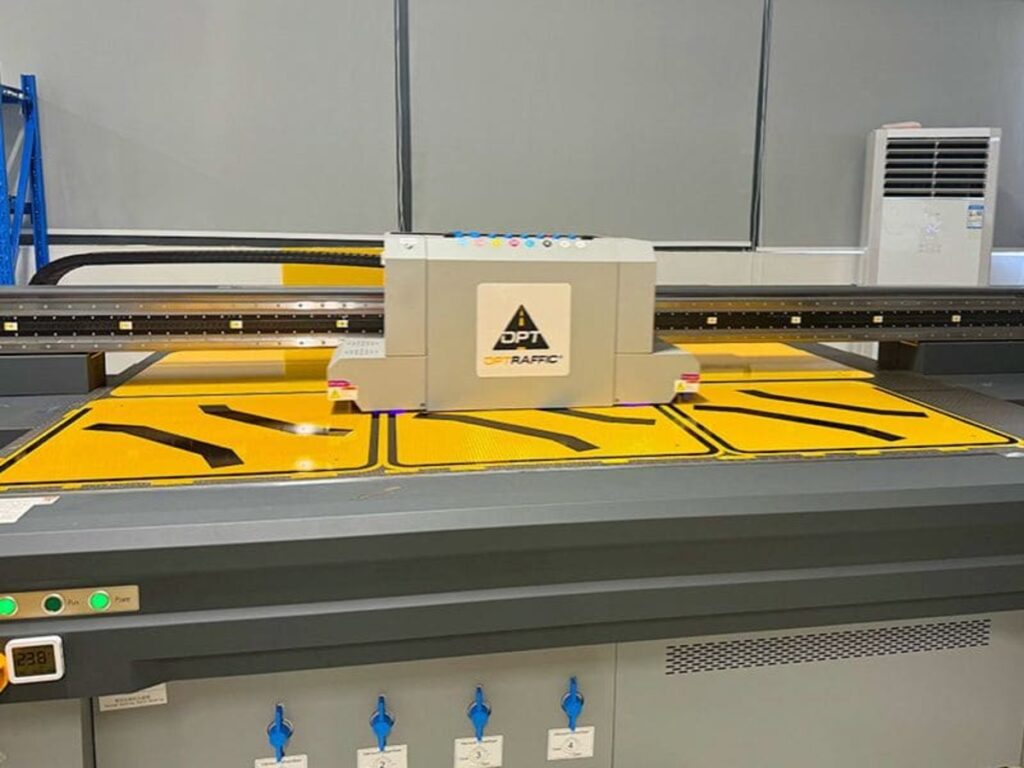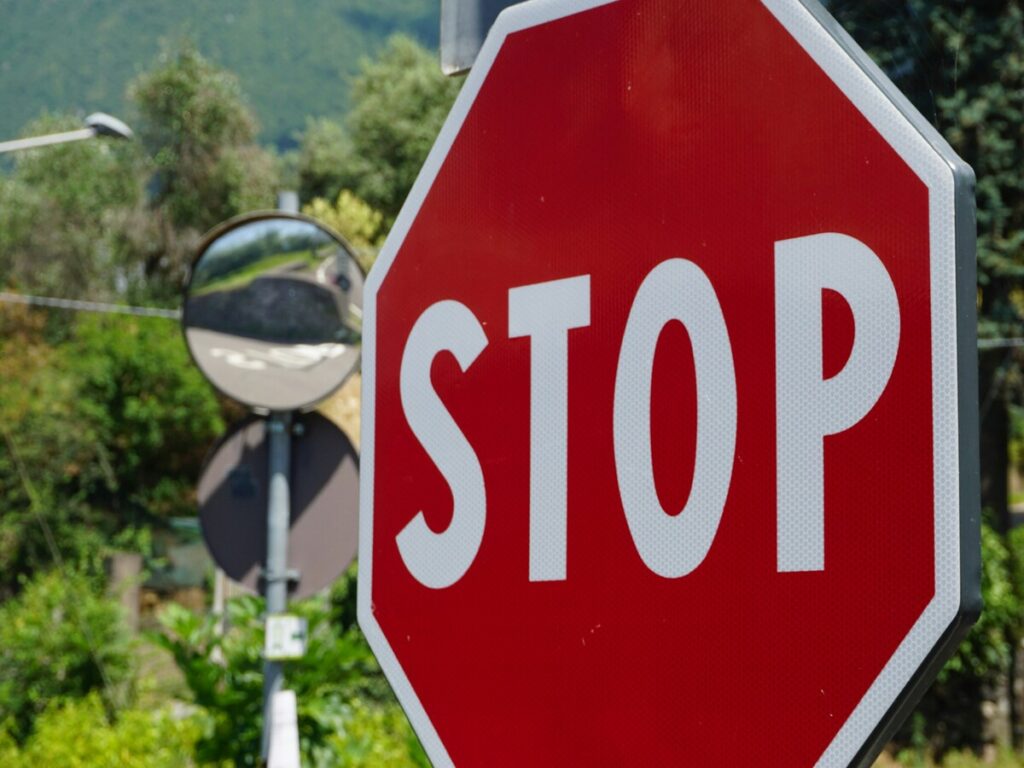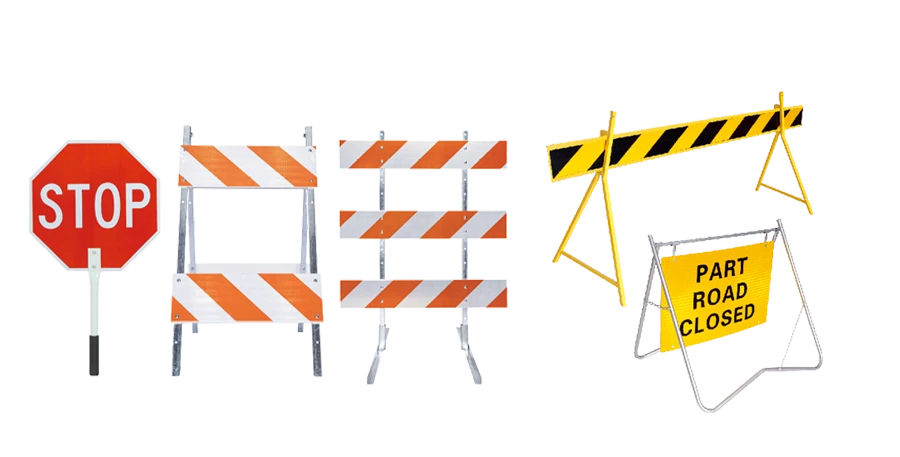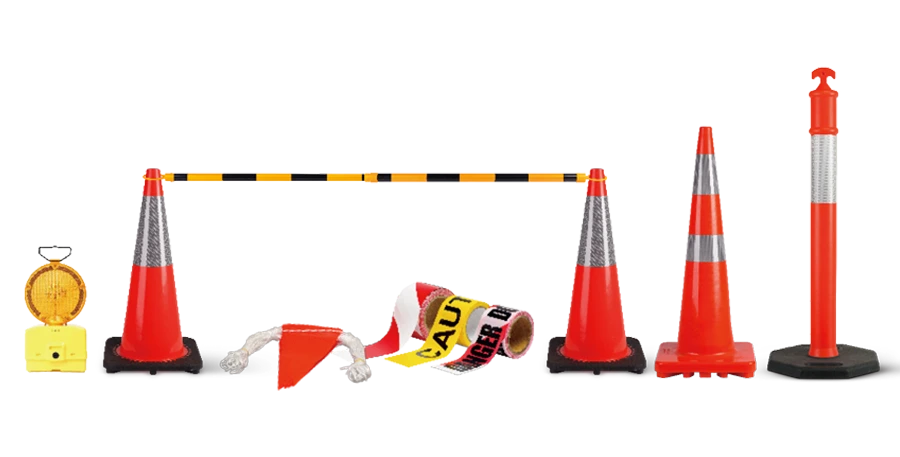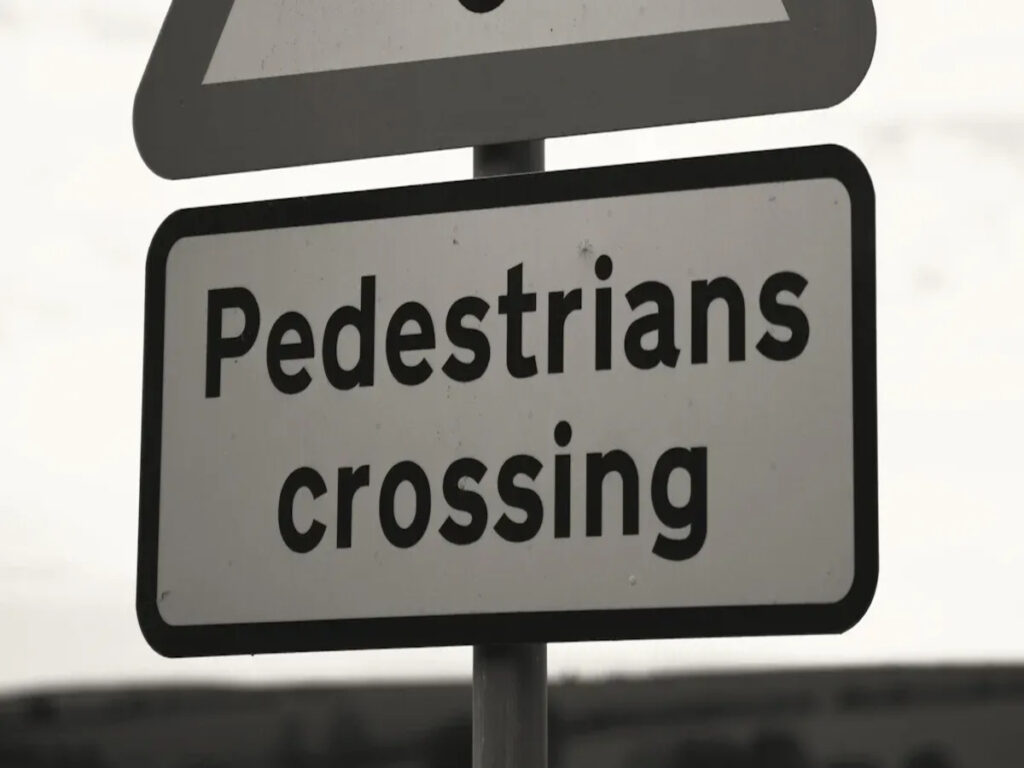
Você pode pensar que um sinal de cruzamento de pedestres sempre mantém as pessoas seguras, Mas os resultados do mundo real geralmente contam uma história diferente. Muitas travessias precisam de mais do que apenas um sinal para proteger os pedestres e atender aos padrões legais. Você deve olhar além da conformidade e perguntar se sua travessia realmente funciona para todos que o usam.
Na OPTRAFFIC, entendemos que a segurança dos pedestres vai além de apenas colocar uma sinalização. É por isso que oferecemos uma gama de soluções projetadas para melhorar a visibilidade dos pedestres e melhorar a segurança na travessia.. De iluminado Sinais de trânsito para sistemas de tráfego inteligentes, nossos produtos garantem que suas travessias atendam aos padrões de segurança e às necessidades do mundo real. Explore hoje a nossa gama para tornar as suas passagens de peões mais seguras para todos.
Eficácia da sinalização de passagem de pedestres
Objetivo do R3-1
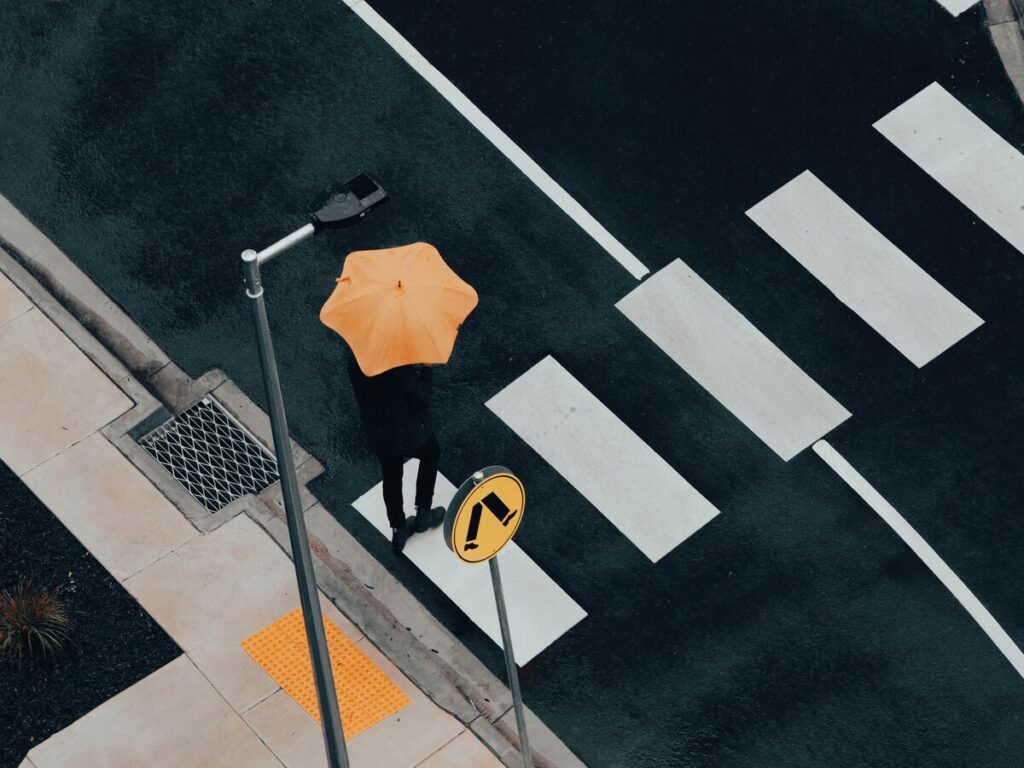
Você vê o Sinal R3-1 em muitas travessias na Austrália. Este sinal de passagem de pedestres informa aos motoristas que as pessoas podem atravessar a estrada à frente. A placa usa um símbolo claro para que todos possam entender seu significado rapidamente. Você encontra perto de passadeiras, zonas escolares, e ruas movimentadas. O principal objetivo é alertar os motoristas e ajudá-los a desacelerar. Quando você avistar este sinal, você sabe que deve observar as pessoas pisando na estrada.
Dica: Procure sempre a placa R3-1 ao se aproximar de um cruzamento. Ajuda você a ficar alerta e pronto para parar para pedestres.
Limitações da sinalização
Uma sinalização de passagem de pedestres nem sempre garante segurança. Às vezes, os motoristas perdem o sinal devido à má colocação ou mau tempo. Você pode notar que os sinais desaparecem ou ficam bloqueados por árvores. À noite, uma placa sem boa iluminação fica difícil de ver. O trânsito rápido também pode dificultar a reação dos motoristas a tempo, mesmo que vejam o sinal.
Você não pode confiar apenas em um sinal para proteger as pessoas. Muitas travessias precisam de recursos extras, como luzes piscantes ou redutores de velocidade. Essas adições ajudam os motoristas a perceber o cruzamento e diminuir a velocidade. Verificações e manutenções regulares mantêm os sinais visíveis e eficazes. Você deve pensar em todos esses fatores quando quiser melhorar a segurança em uma travessia.
Questões-chave
Problemas de posicionamento
É importante colocar cada sinalização de passagem de pedestres onde os motoristas possam vê-la com antecedência. Se a placa estiver muito perto do cruzamento, os motoristas podem não ter tempo suficiente para desacelerar. Se o sinal estiver muito longe, os motoristas podem esquecer a travessia antes de chegarem lá. Às vezes árvores, carros estacionados, ou mobiliário urbano bloqueiam a visualização da placa. Na Austrália, cada estado tem suas próprias regras sobre a distância que a placa deve estar do cruzamento. Por exemplo, Nova Gales do Sul e Victoria dizem que você deve ter linhas de visão claras e uma certa distância da travessia. Você deve sempre verificar as regras locais antes de colocar uma placa.
Desafios de visibilidade
Um sinal que os motoristas não conseguem ver não ajudará ninguém. Alguns sinais desaparecem ao sol ou ficam sujos depois de um tempo. À noite, uma placa sem material reflexivo ou iluminação é difícil de ver. Chuva, névoa, ou luzes fortes de outros carros também podem dificultar a localização da placa. Você pode resolver muitos desses problemas usando sinais maiores, bons materiais reflexivos, e iluminação extra. A boa visibilidade ajuda os motoristas a ver a sinalização a tempo e mantém as pessoas seguras.
Falta de sinais suplementares
Uma sinalização de passagem para pedestres muitas vezes não é suficiente, especialmente em estradas movimentadas. Você pode usar sinais e dispositivos extras para tornar as travessias mais seguras. A tabela abaixo mostra algumas opções comuns e como elas ajudam:
| Sinal/Dispositivo Suplementar | Descrição e finalidade |
|---|---|
| Beacons retangulares rápidos e rápidos (Rrfbs) | LEDs piscando alertam os motoristas quando alguém está atravessando. Você pode colocá-los no mesmo poste da placa principal ou mais adiante na estrada para aviso prévio. |
| Sinais de passagem de pedestres na rua | Lembre os motoristas sobre o direito de passagem dos pedestres em cruzamentos sem semáforos. |
| Sinais aéreos de passagem de pedestres | Pendure acima da estrada para que os motoristas possam vê-los de longe. |
| Marcas de calçada (Por exemplo, PARE ADIANTE, PARE À FRENTE, ESCOLA XING, PED XING) | Pintado na estrada para avisar os condutores antes de chegarem ao cruzamento. Essas marcações podem ajudar a impedir acidentes e tornar as travessias mais seguras. |
Você deve pensar em usar mais de uma dessas opções, especialmente onde há muito trânsito ou é difícil ver.
Velocidade e volume de tráfego
Estradas movimentadas e carros velozes tornam as travessias mais arriscadas. Quando o trânsito é rápido ou há muitos carros, os motoristas são menos propensos a parar para as pessoas no cruzamento, mesmo se você usar uma sinalização de faixa de pedestres com luzes piscando. Estudos mostram que limites de velocidade mais elevados e muitos carros significam que menos motoristas param para as pessoas. Você deve observar o quão rápida e movimentada é a estrada antes de escolher quais sinais e recursos de segurança usar. Às vezes você pode precisar adicionar redutores de velocidade, diminuir o limite de velocidade, ou use semáforos para tornar a travessia mais segura.
Preocupações com manutenção
Você não pode simplesmente colocar uma placa e deixá-la. Ao longo do tempo, sinais podem desaparecer, sujar-se, ou quebre. Uma placa torta ou desbotada não avisa bem os motoristas. Você deve verificar cada sinal com frequência e corrigir quaisquer problemas rapidamente. Limpe os sinais, substituir postagens quebradas, e certifique-se de que as luzes e as peças reflexivas funcionem. Uma boa manutenção mantém cada travessia segura e fácil de ver.
Padrões e Conformidade
Regulamentos Atuais
Existem regras rígidas para a colocação de placas de passagem de pedestres na Austrália. O COMO 1742.10 padrão diz que a placa deve usar materiais fortes. Também precisa folhas reflexivas de alta visibilidade como Aula 1 ou 1W. Isso ajuda os motoristas a ver a placa durante o dia e à noite. A placa deve ficar reta e voltada para os carros que vêm em sua direção. Não deixe que árvores ou carros estacionados bloqueiem a sinalização. A norma explica qual a altura e onde colocar a placa. Os sinais devem ser reflectorizados ou ter luzes, então eles são fáceis de ver o tempo todo. Você precisa limpar e verificar a placa com frequência para mantê-la funcionando bem.
Dica: Certifique-se de que seus sinais estejam limpos, direto, e fácil de detectar de longe.
Variações de estado
Cada estado da Austrália tem suas próprias regras para travessias. Você pode ver palavras ou imagens diferentes nas placas em cada estado. Por exemplo:
- Alguns estados colocam “PARAR PARA” no sinal, Mas outros não.
- Os sinais de passagem de pedestres na rua podem ser colocados em linhas centrais ou ilhas, não apenas o lado.
- Os conselhos locais podem escolher quando usar determinados sinais ou misturá-los com outros.
- Alguns estados obrigam os motoristas a parar para as pessoas, mas outros querem apenas que os motoristas cedam.
Você deve sempre verificar as regras locais antes de colocar ou alterar uma travessia. Seguir as regras estaduais ajuda a evitar problemas e mantém as pessoas seguras.
Marcações e iluminação rodoviária
Boas marcações e luzes rodoviárias tornam as travessias muito mais seguras. Sinais e linhas refletivas ajudam os motoristas a ver os cruzamentos à noite ou com mau tempo. Estudos mostram que dispositivos reflexivos podem reduzir lesões em até 84%. Cidades como Melbourne e Brisbane tiveram menos acidentes depois de adicionar sinais reflexivos e luzes melhores. Sinais de LED podem fazer cruzamentos de até 286% mais fácil de ver à noite. Você pode ver isso no gráfico abaixo:
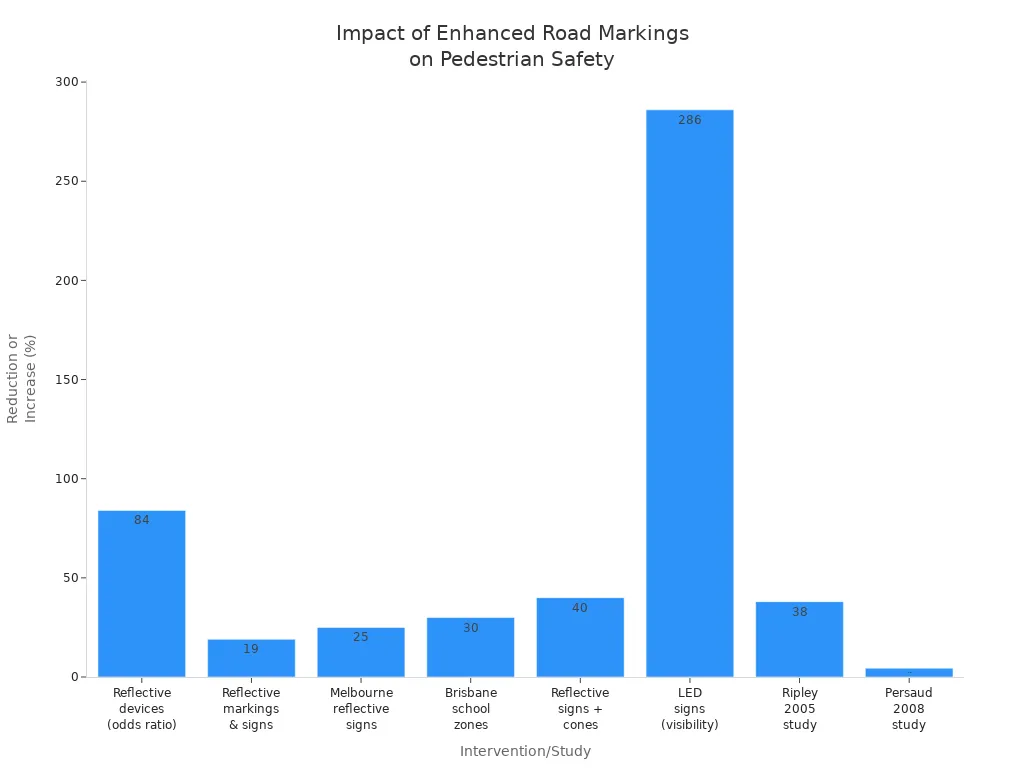
Você deve usar materiais reflexivos, marcações rodoviárias claras, e boas luzes para tornar as travessias mais seguras. Estas etapas ajudam os motoristas a reagir mais rapidamente e a proteger as pessoas que atravessam a rua.
Correções e melhorias
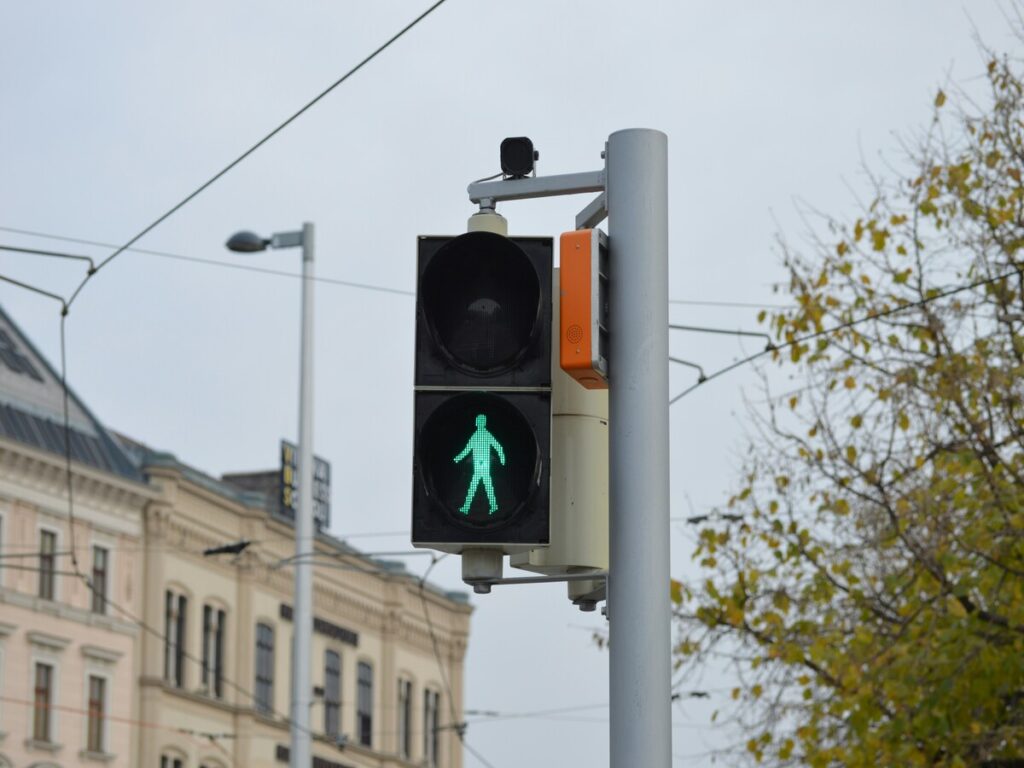
Melhor posicionamento
Colocar cada sinalização de passagem de pedestres no lugar certo ajuda muito. Os motoristas precisam ver a placa com antecedência para que possam diminuir a velocidade. Não esconda placas atrás de árvores ou carros estacionados. Certifique-se de que nada bloqueie o sinal, como mobiliário urbano. Sempre verifique as regras locais sobre a altura e a distância que o sinal deve estar. Um bom posicionamento permite que os motoristas percebam a travessia e reajam com segurança.
Dica: Caminhe ou dirija pelo seu cruzamento. Verifique se você consegue ver a placa de longe.
Visibilidade aprimorada
Escolhendo o melhores materiais e refletores facilitam a visualização dos sinais. A tabela abaixo mostra algumas boas escolhas:
| Tipo de material | Tipo de refletor | Combinações de cores | Principais recursos |
|---|---|---|---|
| Plástico durável | Refletores de pilar de plástico | Azul/Branco, Branco/preto, Preto/Amarelo | Resistente às intempéries e ao desgaste, altamente reflexivo |
| Alumínio | Refletores de coluna | Vermelho/Amarelo, Azul/Branco, Preto/Branco | Durável, Excelente visibilidade, combina com muitas estradas |
Esses materiais de sinalização de trânsito ajude o sinal de passagem de pedestres a se destacar em qualquer clima. Você pode usá-los em faixas de pedestres, perto das escolas, em lombadas, em estradas tranquilas, e nos pontos de ônibus. Cores brilhantes e refletores fortes chamam a atenção dos motoristas. Isso mantém as travessias seguras dia e noite.
Faixas de pedestres de alta visibilidade e extensões de meio-fio também ajudam. Os motoristas diminuem a velocidade e param com mais frequência quando veem esses sinais. Estudos mostram mais 80% dos motoristas acham que extensões de meio-fio tornam as travessias mais seguras. Marcações brilhantes e sinais reflexivos ajudam os motoristas a detectar cruzamentos mais rapidamente, mesmo com mau tempo ou pouca luz.
Medidas Complementares
Adicionar recursos extras pode tornar as travessias muito mais seguras. Estes incluem:
- Beacons retangulares rápidos e rápidos (Rrfbs): Luzes piscantes alertam motoristas quando alguém está atravessando, especialmente à noite.
- Sinais digitais de velocidade: Eles mostram aos motoristas sua velocidade e os lembram de desacelerar. Em zonas escolares, eles podem reduzir a velocidade em até 9 km/h.
- Reboques de velocidade de radar: Esses sinais móveis lembram os motoristas de diminuir a velocidade. Eles funcionam mesmo depois que os motoristas os ultrapassam.
- Sinais de feedback de velocidade dinâmica: Esses sinais podem reduzir o risco de mortes de pedestres em até 22%.
- Câmeras de velocidade: Esses dispositivos diminuem as velocidades médias e reduzem o excesso de velocidade, Tornando as travessias mais seguras.
- Rumble tiras: Essas tiras fazem barulho e sacodem o carro, alertando os motoristas para reduzir a velocidade perto de um cruzamento.
- Sistemas de alerta ativos: Luzes vermelhas piscando, sinais de trânsito, e barreiras de barreira ajudam os motoristas a seguir as regras e agir com segurança.
Observação: Usar mais de um desses recursos juntos funciona melhor. Por exemplo, use luzes piscantes e sinais de velocidade no mesmo cruzamento.
Tráfego calmante
Acalmia de trânsito retarda carros e mantém as pessoas seguras. Sorces Bumps, travessias elevadas, e restringir extensões, tudo ajuda. Quando você adiciona estes, Os motoristas diminuem a velocidade e prestam mais atenção. Extensões de meio-fio tornam as travessias mais curtas e fáceis de ver. Cruzamentos elevados funcionam como redutores de velocidade e fazem os motoristas reduzirem a velocidade. Essas mudanças ajudam os motoristas a parar com mais frequência e diminuir a chance de acidentes.
Novas tecnologias
A tecnologia inteligente agora ajuda a tornar as travessias mais seguras. No Sul da Austrália, conselhos usam travessias escolares movidas a energia solar com controle de nuvem. Essas travessias usam sensores e dispositivos IoT para monitorar a velocidade dos carros e as pessoas atravessando. Conselhos obtêm dados em tempo real e podem alterar semáforos de longe. Isso mantém as crianças seguras e ajuda no planejamento do trânsito.
O Sistema de alerta ativo de junção rural (RJAWS) usa energia solar e luzes piscantes em cruzamentos rurais. Ele detecta carros em estradas vicinais e avisa os motoristas na estrada principal. Isso ajuda os motoristas a perceber cruzamentos e reduz acidentes, especialmente onde as travessias não são esperadas.
Sistemas de transporte inteligentes (ISSO É) ajude também. Avisos sonoros e visuais no carro informam os motoristas sobre cruzamentos à frente. Esses sistemas ajudam os motoristas a agir melhor e a cometer menos erros. Estudos mostram que avisos sonoros funcionam melhor para ajudar os motoristas a perceber cruzamentos.
Você pode ver como essas etapas de segurança reduzem acidentes e conflitos no gráfico abaixo:
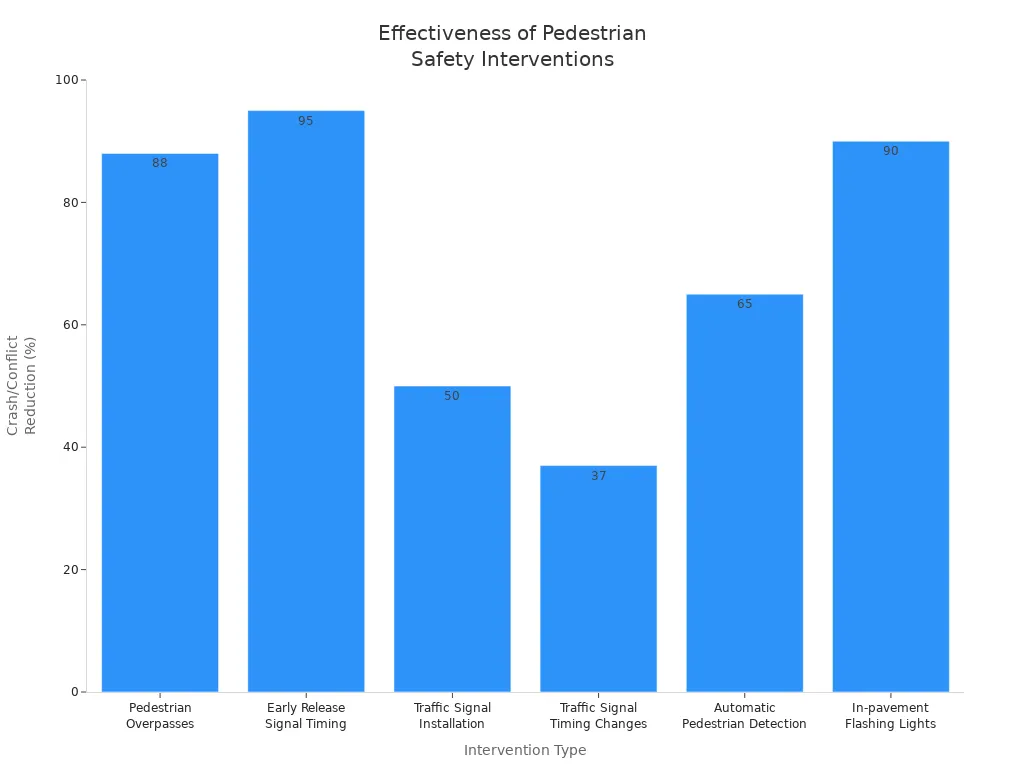
Sistemas automáticos de detecção de pedestres, luzes intermitentes no pavimento, e linhas de parada antecipada ajudam os motoristas a parar mais cedo e a manter as pessoas seguras. Os sistemas de prevenção de acidentes com pedestres em automóveis agora evitam 70% de situações perigosas e reduzir as velocidades de impacto em mais 50% quando acidentes acontecem.
Dica: Verifique frequentemente suas travessias e pense em usar novas tecnologias para acompanhar as melhores ideias de segurança.
Você aprendeu que uma sinalização de passagem de pedestres não é suficiente para manter as pessoas seguras. A melhor maneira é usar travessias elevadas, marcações brilhantes, e os recursos certos para cada lugar. Confira na tabela abaixo os principais pontos:
| Remover | Beneficiar |
|---|---|
| Travessias elevadas | Faça os carros desacelerarem e ajude os motoristas a enxergar melhor |
| Sinais simples | Pare muitos sinais e deixe as coisas claras |
| Design para cada lugar | Use as melhores ideias de segurança para cada local |
Para tornar suas travessias melhores, faça essas coisas:
- Colocar passagens elevadas ou sinalizadas onde forem necessárias.
- Use marcações brilhantes e extensões de meio-fio.
- Adicione maneiras de desacelerar os carros e certifique-se de que os cruzamentos sejam próximos e fáceis de encontrar.
Certifique-se de seguir as regras e manter todos seguros na vida real.
Perguntas frequentes
O que significa o sinal de passagem para pedestres R3-1?
O sinal R3-1 informa que há uma faixa de pedestres à frente. Você deve diminuir a velocidade e observar as pessoas atravessando a estrada. Este sinal ajuda a manter todos seguros.
Você precisa de mais do que apenas um sinal para uma travessia segura?
Sim. Você precisa de recursos extras, como marcações brilhantes, luzes piscando, ou lombadas. Isso ajuda os motoristas a ver a travessia e parar a tempo. Os sinais por si só podem não proteger a todos.
Com que frequência você deve verificar e manter os sinais de passagem de pedestres?
Você deve inspecionar os sinais a cada poucos meses. Procure o desbotamento, sujeira, ou dano. Limpe e repare sinais rapidamente. Uma boa manutenção mantém as travessias seguras e fáceis de ver.
Existem regras sobre onde colocar sinais de travessia de pedestres?
Sim. Cada estado da Austrália tem suas próprias regras. Você deve seguir as diretrizes locais para a altura da sinalização, distância da travessia, e visibilidade. Sempre verifique os requisitos do seu estado antes de instalar uma sinalização.

